new web: http://bdml.stanford.edu/pmwiki
TWiki > Rise Web>ClimbingRobot > LegDesign > StanfordTestTrack > StanfordTestTrackSummer04Tests>PerformanceMetrics (18 Oct 2004, AMcClung? )
Rise Web>ClimbingRobot > LegDesign > StanfordTestTrack > StanfordTestTrackSummer04Tests>PerformanceMetrics (18 Oct 2004, AMcClung? )
Performance Metric
The purpose of a performance metric is to determine the effectiveness of various gaits, trajectories and foot designs in an concrete and objective manner. The Stanford force plate can measure 3 forces and 3 moments (6-axis) at a fixed sample rate (currently 1kHz), so any combinations of these measurements and time history can be used to extract performance information from a data set. This is a first pass at establishing some metrics to analyze test data beyond visual inspection.Metric #1 (PM1) - This metric values net adhesive force (normal), only positive climbing forces (longitudinal) and positive (inward, toward body center for the current leg, which is set up as a right leg) lateral forces
Metric #2 (PM2) - This metric values net adhesive force (normal), net climbing forces (longitudinal) and inward lateral forces
Metric #3 (PM3) - This metric values low detachment forces (
 ), net climbing forces (longitudinal) and inward lateral forces
), net climbing forces (longitudinal) and inward lateral forces
Metric #4 (PM4) - This metric values net adhesive force (normal), net climbing forces (longitudinal), inward lateral forces and low disengagement forces (
 )
)
 - Detachment force = net adhesive (normal) force over last 0.3s of climbing window
- Detachment force = net adhesive (normal) force over last 0.3s of climbing window - Disengagement force = all residual forces 0.3s after end of climbing window
The XYZ axes for the force plate are as follows:
- Disengagement force = all residual forces 0.3s after end of climbing window
The XYZ axes for the force plate are as follows: - +X is force to the left (for a right-side leg, this is pulling laterally toward the body center)
- +Y is force down (this is a climbing force, acting in the direction of gravity)
- +Z is pulling away from the wall (this is an adhesive force in the direction normal to the wall)
+X <------*
/|
/ |
/ |
/ |
+Z ' V +Y
Gait 13 - Decent gait using the dactyl on the platform
Gait 28F - Early gait using pulling in (wing angle) on the platform (front leg trajectory)
Gait 46F - Decent gait using the v0.1? stanford feet on the platform (front leg trajectory)
Gait 47 - Decent gait using the v0.1 stanford feet on the climbing wall
Summary #1 - 8/11/04 Testing
On this day, 4 different gaits were compared for 2 foot configurations:- the unchanged foot
- a foot with a yaw stop and 1 bent claw
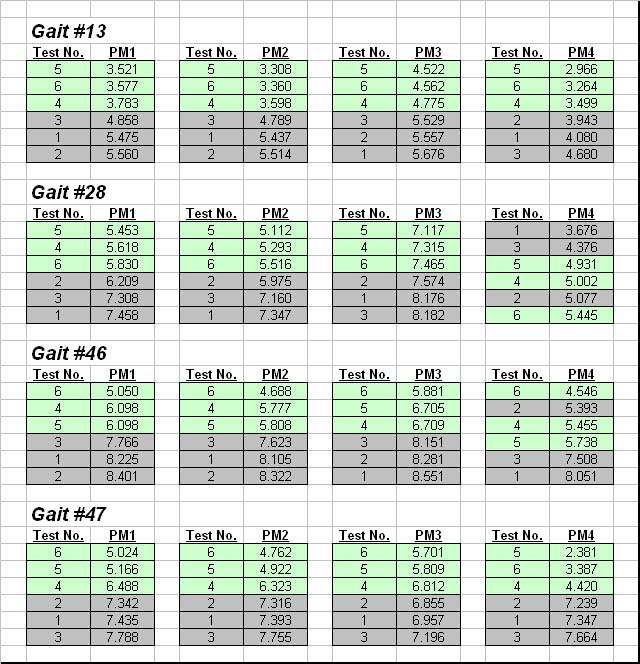

Notes
- each group contains 3 numbered tests with identical settings (ie. 1,2,3 for no changes, 4,5,6 for yaw stop & bent claw)
- shows how gaits are getting progressively better (MAIN POINT HERE)
- concrete measure of each gait/foot configuration performance
- larger performance metric numbers mean better results
- shows the simpler (only 2 cases for each) metric between 4 standard gaits
- shows the difference between no foot changes and yaw stop & 1 bent claw
Summary #2 - 8/17/04 Testing
On this day, various foot configurations were examined for 4 different gaits.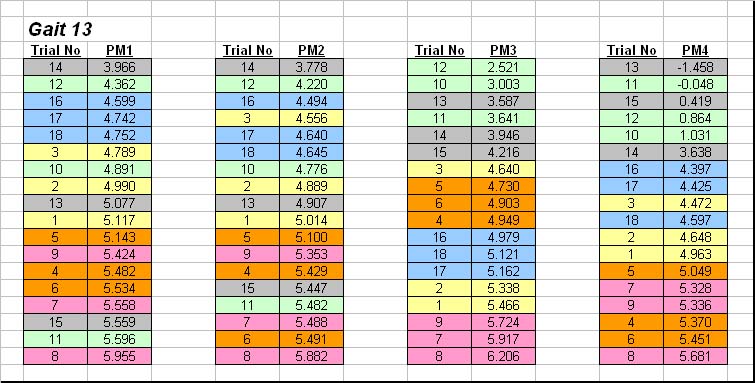
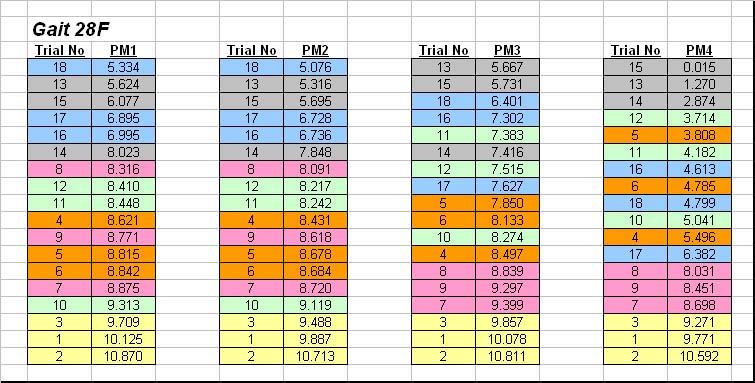
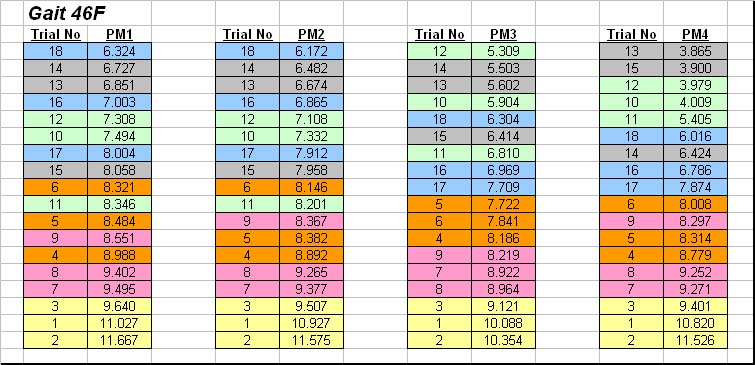
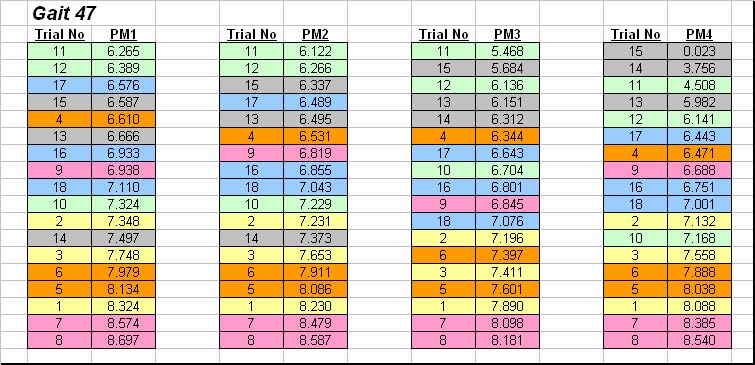

Notes
- each group contains 3 numbered tests with identical settings (ie. 1,2,3 for yaw stop & 1 bent claw, 13,14,15 for no changes)
- shows the effect of various foot design changes on 4 standard gaits
- the effectiveness of the yaw stop, bent claws are seen
- bending 1 claw has greater effect than just adding yaw stop (MAIN POINTS HERE)
- 1 or 3 bent claws and yaw stop work fairly well together
- more lucid notes may follow as they appear
Ideas, requests, problems regarding TWiki? Send feedback